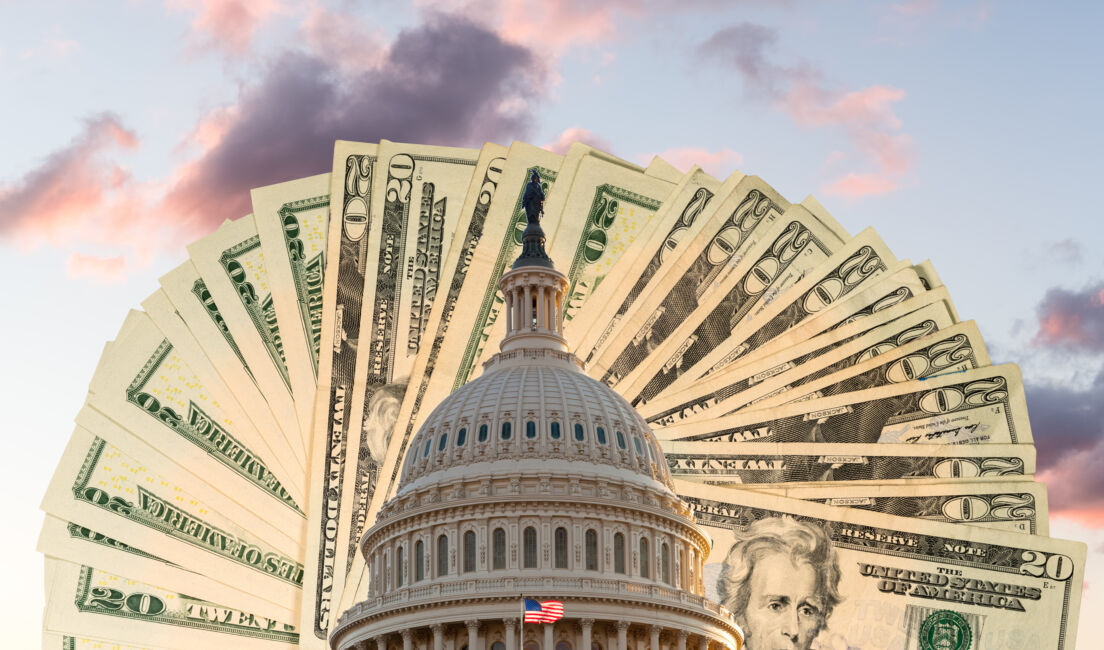Default, a trillion-dollar coin, and 5 links worth your time
Hitting the debt ceiling

Our country’s budget year ends at midnight on September 30th. Late last Thursday night, President Biden signed a bill that Congress passed earlier that day to fund the federal government through December 3rd. Had he not done so, the federal government would have closed as of 12:01 on October 1st.
Federal government shutdowns are a big deal, particularly during a pandemic, but they aren’t rare. The last shutdown (the longest in U.S. history) started in late December 2018 and ended thirty-five days later in January 2019. Shutdowns occur because Congress cannot agree on a budget and, without one, the federal government isn’t funded.
Budget deadlocks are a bipartisan effort
The current disagreement in Congress centers on a budget proposal that includes historic levels of spending by the government on infrastructure and healthcare (among other things).
No president or political party has a monopoly on budget crises or deadlock over budgets: since 1981, there have been fourteen federal government shutdowns.
As we’ve noted here before, spending on infrastructure and other government-funded programs is popular among many Americans. Politicians like to give their constituents what they want. The problem is, as we’ve also noted here, someone has to pay for those things.
Most of us are a lot more enthusiastic about getting the benefits of those programs than we are about paying for them through taxes or cuts to other programs.
Crisis averted?
And that leads us to the next big economic crisis we face. Since we like spending money so much more than we like paying the bills, the United States has a lot of debt, about $28 trillion.
Before you breathe a sigh of relief at Thursday’s late-night solution to avoiding a government shutdown, you should know that the Treasury Secretary of the United States estimates that the federal government will default on this debt sometime within the next few weeks if Congress fails to agree to raise the debt ceiling.
What is the debt ceiling, you ask?
Bad news, good news
The bad news is that the fight in Congress over the debt ceiling is likely to become very ugly, very quickly.
The good news is that our five links this week will get you up-to-speed on the debt ceiling, its history, and how it affects our economy. I’ve also included links to articles that question whether the debt ceiling is a tool whose time has passed and a piece looking at the cost of having so much debt. Finally, one link looks at the suggestion (made by many over the past few weeks) to mint a $1 trillion coin to avoid default.
It’s comforting to think that all the blame for our economic challenges can be placed at the feet of politicians and their inability to work together. The truth of the matter, however, is that each of us has a responsibility to better understand how and why our government spends money and to consider what we demand from the federal government.
If we’re not happy with the way things currently are, it’s time to start talking productively with one another about how to change.
5 links worth your time
- Everything you need to know about the debt ceiling.
- Viewpoints on the debt ceiling from the Right and the Left.
- Here’s why Warren Buffet said that “having a debt ceiling to start with is a mistake.”
- Why high debt matters even if there is no inflation and rates remain low.
- Could minting a $1 trillion coin actually happen, and could it actually help avert a federal debt default?
Photo by steheap on Adobe Stock